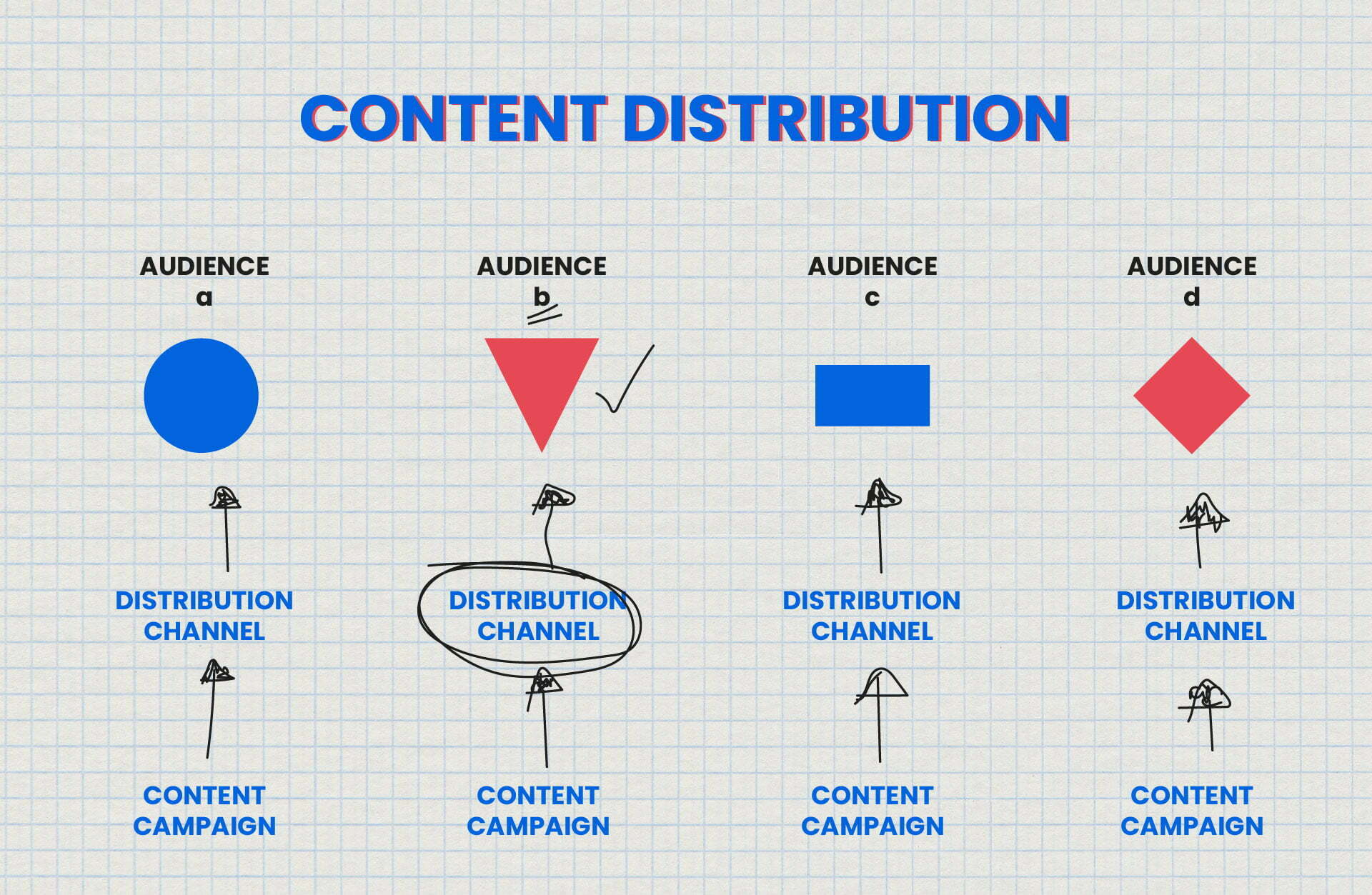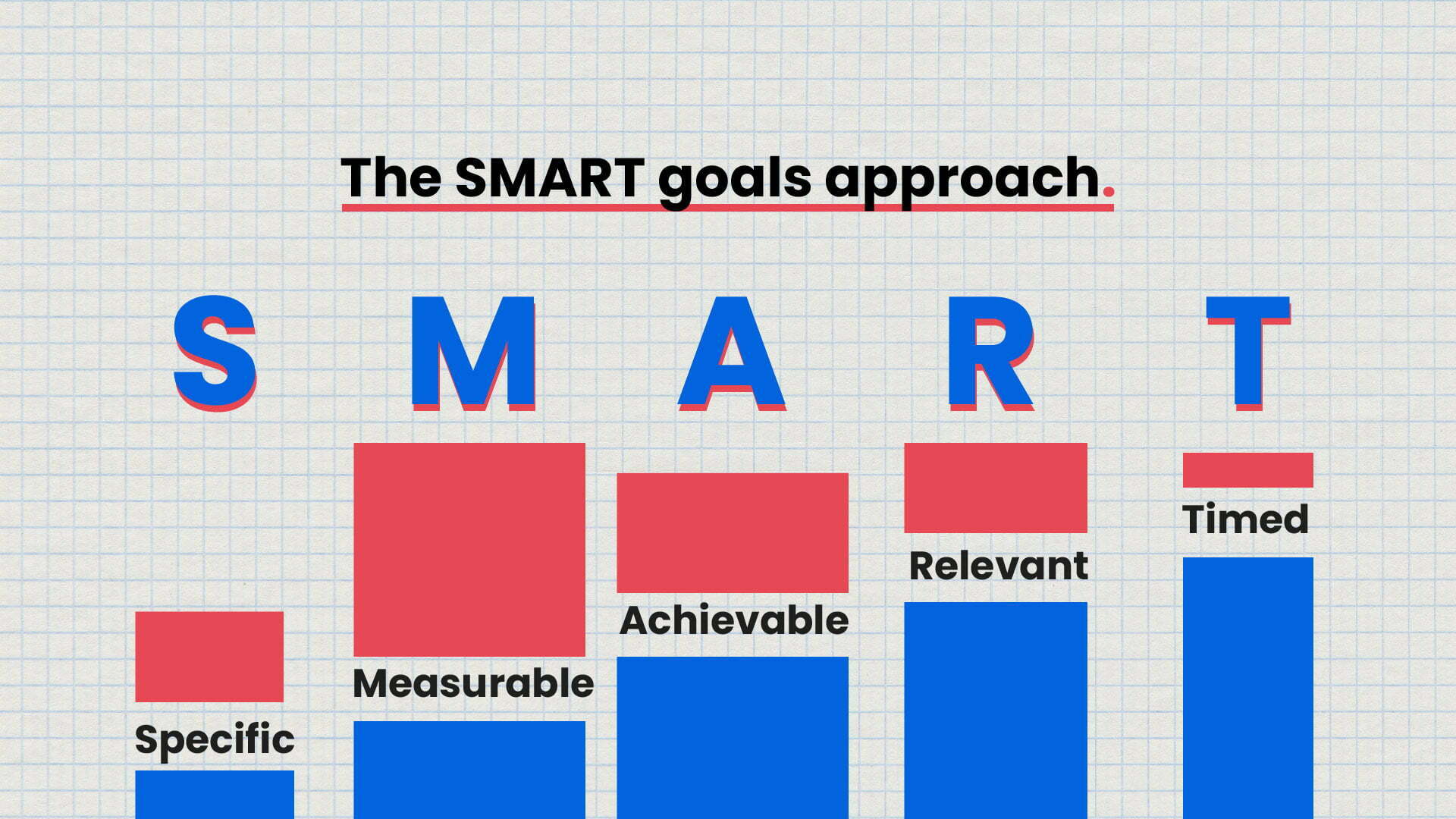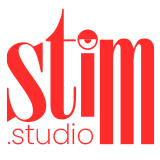You stayed up all night, giving your blood, sweat, and tears to create the best content.
You nailed down your content to the last detail. But what’s the point of making all the effort if nobody sees it?
Creating good content demands a great deal of work itself, but what’s more challenging is developing the perfect content distribution strategy.
Otherwise, those to who you intend to deliver the message will likely never hear it.
Are you facing the same problem? Is your work not paying off as it never reaches your desired audience? Then don’t worry! Please sit back and relax because we’ll give you exactly what you need.
In the article, we will give you step by step framework of how you can develop an effective content distribution strategy that works the best in your favor and drives your desired audience to your content.
Here's how a healthy distribution plan looks like
What is Content Distribution?
Content distribution is a marketing technique of reaching an audience and sharing your content through various social media formats. Many content creators don’t pay much heed to it, but the truth is that it is equally as important as the creating part. It ensures that your content reaches the right people and helps drive relevant traffic to your site.
Why do I need a content distribution strategy?
Great content has the potential to attract the desired audience, but it’s of no use if your audience needs to know where to look for it. It is like doing all for nothing.
Putting your content in front of the right audience in the right places and at the right times is necessary. And for that, you need to develop an effective content distribution strategy. It will lead you to reach your target people who want to benefit from your content whether it’s for entertainment such as music videos or other branded videos.
How does it work?
You must be wondering exactly how and where you can distribute your content. Well, there are several ways to do so. The three basic methods that you can look for include:
Owned content distribution channels
These are the channels that you own. Such channels work the best in your favor as you have full control over them.
You can easily update your content according to your audience’s needs and remove what needs to get more responses. Moreover, you can directly chat with your customers and develop a better relationships.
Earned content distribution channels
These include channels that are owned by an influencer or a popular site. Promoting your work on such channels gives you an edge as you promote through a person or group with a huge fan following.
The dark side is that you have zero control over your content. And so keeping track of your progress becomes a hard nut to crack.
Paid content distribution channels
These include channels where you pay to distribute your content. Pay-per-click, social media ads, sponsored content, paid social media influences, and many more fall under this category.

How to Develop an Effective Content Distribution Strategy
Here’s how you can build a winning content distribution strategy for yourself in 9 steps:
1. Set your goals and objectives
You can only build the perfect strategy if you know what you want to achieve, how well you want your content to perform, what clients you want to acquire, and how far you’re willing to go.
Defining your goals since the start would give you an upper hand, and you could assess how well your content is functioning.
2. Knowing your target audience
Attracting just any audience isn’t the key. The intent of content distribution is all about putting your content in front of the right audience. Understanding your consumers is the heart of a perfect strategy.
All you need is to answer the following:
- Who are they?
- When are they online?
- What do they search for?
- What are their preferred channels?
- What are the platforms they are most active on?
- What do they want from you?
- What can you give to them?
The most straightforward approach that most marketers go for is by creating a buyer persona. You can start by collecting data from your existing customers, their age, gender, how they feel about your content, their preferences, and their pain points.
Moreover, research your distribution channels’ visitors, social media followers, and other subscribers.
It would be best if you searched for the audience that can be the most fruitful addition to your audience list.
Understanding your audience can assist you in better planning what to post, when, and where to promote it.

3. Do a content audit
Before publishing new content, perform an audit on the content already up on distribution channels.
It will allow you to closely analyze your content and how well it meets your objectives.
It will give you an insight into the ideas you executed, the response to them, and what you should address next.
Here is what you need to do:
- Logging your content to have a detailed report.
- Keep track of your content’s impact, and change it accordingly.
- Look for the gaps you’ve left that keep your content from achieving its goal.
4. Setting up KPIs
Establishing KPIs or Key Performance Indicators is an excellent way of judging if your content distribution strategy is effective enough. It allows you to assess your reach and the number of engagements your content managed to get.
Pro marketers use the SMART goals approach
Specific: What exactly do you want to achieve?
Measurable: How will you know you’ve achieved it?
Attainable: Is it possible to achieve it?
Relevant: Is it worth achieving?
Time-based: When do you plan on achieving it?

5. Look for effective distribution options
People tend to leave this option as an aftermath thought, but they don’t understand that choosing where to put your content is just as crucial as creating it.
It is where knowing your audience inside out would prove the most fruitful. Access your initial strategy and see where you got the most response. Look for the platforms where your customers-to-be are the most active.
After collecting the data, you may promote your work on:
- Social media platforms.
- Streaming services.
- Through PRs.
- Pay to promote it on websites like YouTube, Reddit, etc.
6. Design a distribution calendar
After you’ve selected your distribution channels, work on a distribution calendar to further enhance your distribution strategy. It will allow you to put the right content at the right time.
To make social media algorithms work in your favor, you need to plan a schedule for what and when to promote on a specific distribution channel.
It is the most efficient way of planning out goals and objectives. Your team would also be clear about what they need to achieve in a specific time.
7. Create your content
Now that you’ve defined your goals and KPIs, defined your audience and chose your required channels, and set up the timing, it’s time for you to start working on the content to distribute.
Whether you create it yourself or have a team do so, the most crucial thing you need to keep in mind is the integration of keywords.
Content marketers use the right keywords at the right time such as in social media or SEO (Search Engine Optimization), including keywords that will make your content rank higher in different searches.
That way, your target audience would likely stumble upon your content, and you’d have a handsome addition to your consumer list.
8. Distribute your content
Here comes the step for which you’ve worked this hard. It’s time to present your content to the world.
Take out your editorial calendar and distribution channel options and distribute accordingly.
Timing is very important when distributing.
If your target audience is people above 18 years old, they are likely to be active at night.
At the same time, different strategies would be used if you desire to reach kids or old individuals.
9. Accelerating your performance
No, you’re not done yet. How can you be certain that your content distribution strategy is proving successful? That’s right! By analyzing its outcome. Pull out your objectives and KPIs and start measuring your results to see the progress you have made so far.
Look for the number of people that interacted and engaged with your content and how many of them you were able to convert into loyal consumers/fans.
Make a weekly or monthly schedule to access your progress.
Set up a weekly, monthly, or quarterly schedule. It would assist you in keeping a constant eye on and planning out goals for yourself accordingly regarding how many fans or consumers you plan on making this week.
Conclusion
If you want your efforts to pay off, it’s high time you develop an effective content distribution strategy. No one wants to waste their hard work and time now, do they?
You need to follow the method step by step, build the perfect strategy for yourself, and see how the results will turn out in your favor. We hope this article clears all your confusion and doubts.
If you need help, we can do this for you! Contact us to get your brainstorming session, content campaign, and strategy.





